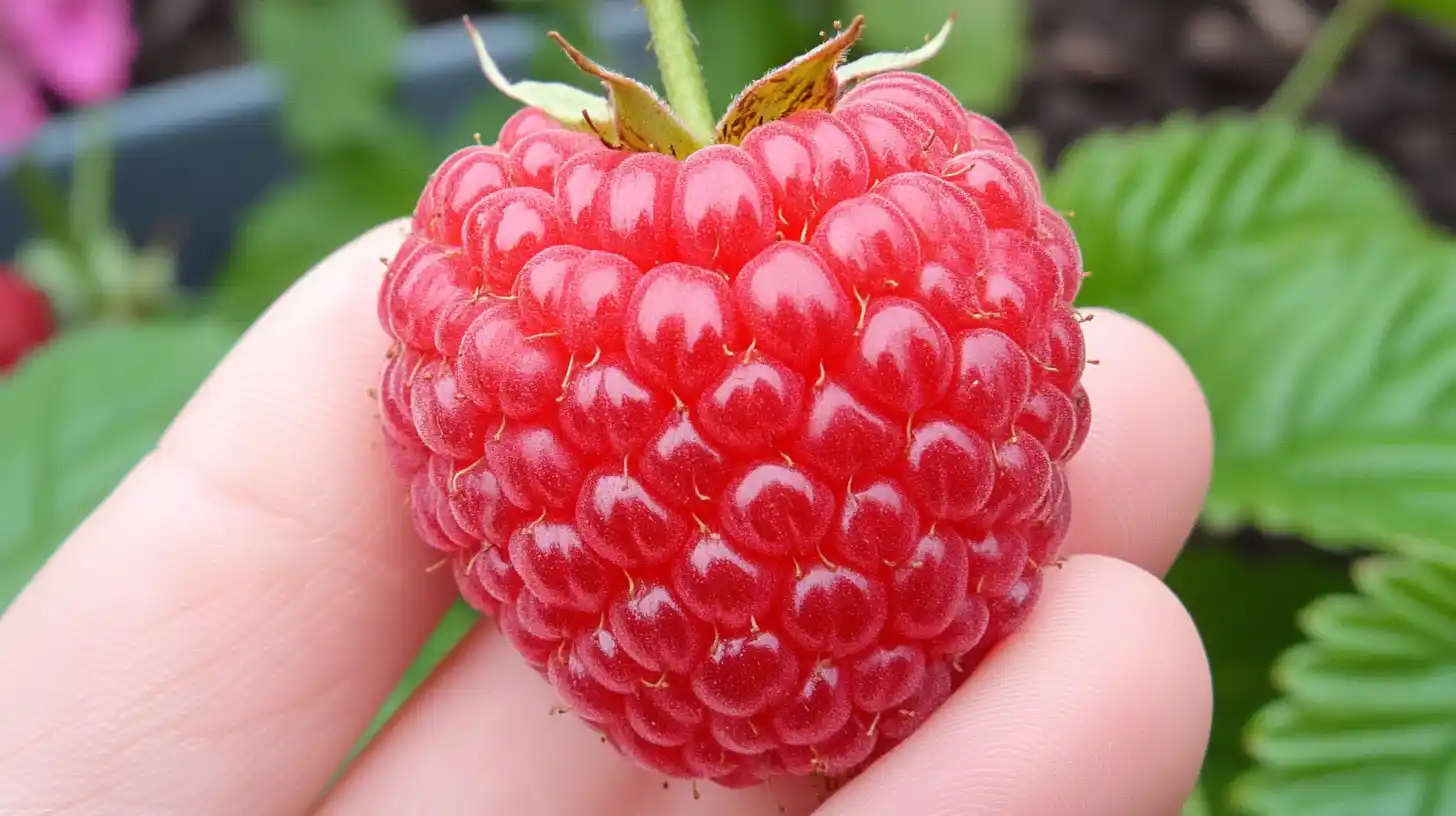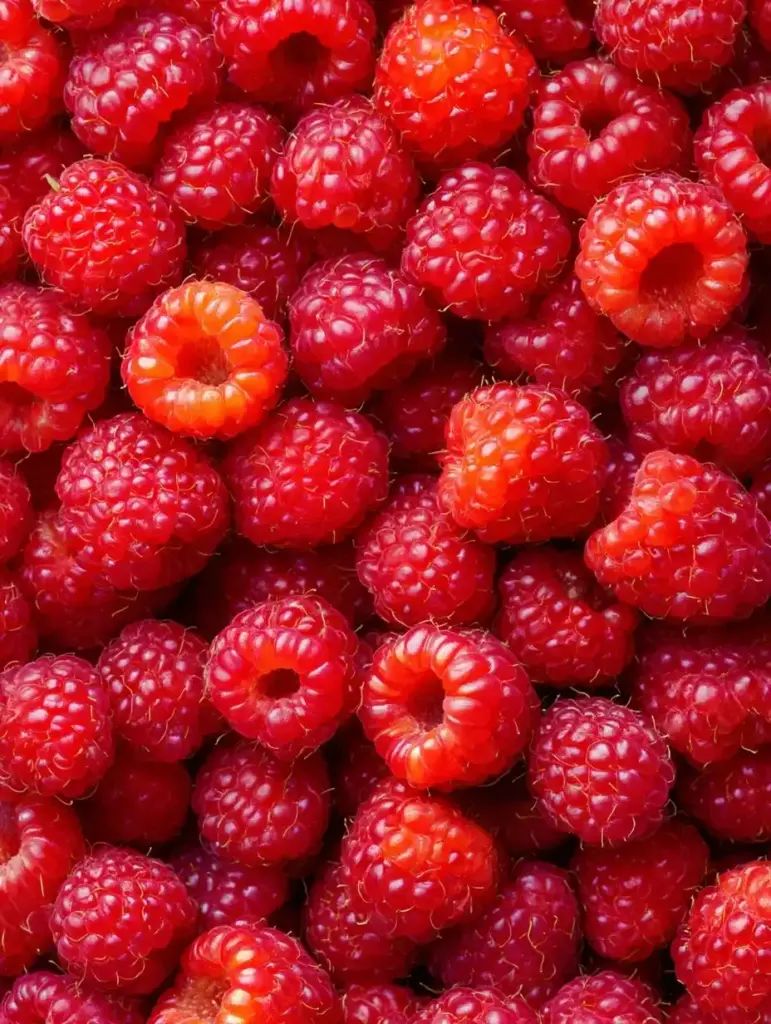Raspberries are among the most rewarding fruits you can grow at home—especially if you’re working with limited space. Whether you’re tending a compact balcony garden, a slim side yard, or even planting along a sunny fence, you can still grow raspberries and enjoy a bountiful harvest every season. With the right variety, smart spacing, and a bit of pruning, even two or three raspberry canes can produce pounds of juicy berries. If you’re just getting started, you may also want to check out these tips on building raspberry trellises and avoiding common raised bed gardening mistakes to set your plants up for success.
In this complete guide, we’ll walk through how to grow raspberries in small spaces—from choosing high-yield varieties to container planting, pruning, and more. Whether you’re gardening in pots or tight garden beds, you’ll discover practical, expert-backed ways to grow raspberries successfully, no matter your location.
Let’s dig into how to grow raspberries the smart way in tight spots.
Table of Contents
1. Growing Raspberries in a Small Space or Garden
Growing raspberries doesn’t require a sprawling backyard. With careful planning, you can grow raspberries in a compact urban garden, narrow side yard, or even alongside a fence. The key is understanding spacing, yield expectations, and choosing the right varieties. Let’s break it down.
How Many Raspberry Canes Do I Need for a Good Harvest?
You don’t need dozens of canes to enjoy a decent crop. Here’s a general guideline:
- 2–3 canes: Enough for one or two people
- 5–6 canes: Great for a small family
Each healthy cane can yield up to 2 pounds (900g) of fruit, or around 6 small punnets. If you’re strategic about your variety choices and use smart pruning techniques, you can even extend the harvest season by combining early, mid, and late-fruiting types. Some varieties are capable of double cropping, offering a second flush of berries later in the year.
How Much Space Do Raspberry Canes Need?
Though raspberries can thrive in tight spaces, air circulation is essential to prevent disease and promote high yields. Follow these spacing tips:
- Plant canes 12 inches (30 cm) apart
- Leave at least 12 inches front-to-back for airflow and support stakes
- Expect vertical growth up to 8 feet (2.5 meters)
Pro tip: You can plant canes close to a wall or fence, but avoid letting them grow directly against it. Give them a few inches of breathing room to stay healthy.
What Are High-Yielding Raspberry Varieties?
To get the most out of your space, opt for high-yielding and disease-resistant varieties. Here are top picks:
In the U.S.:
- Boyne
- Cascade Delight
- Killarney
- Royalty
In the UK:
- Glen Ample
- Glen Mor
- Glen Fyne
These varieties are bred for big harvests and are great choices whether you’re planting in-ground or in containers.
Autumn Fruiting Raspberries
If you’re aiming for late-season fruit, autumn-fruiting raspberries are ideal. They start cropping in late August through September, and while their yield may be smaller than summer varieties, they make up for it with easier pruning routines.
Keep in mind:
- Smaller plant size = easier to manage
- Yields improve with clever pruning techniques
- In shady areas, blackberries might outperform autumn raspberries
Where Are the Best Places to Plant Raspberry Canes?
Raspberries are surprisingly flexible and don’t require full sun to thrive. A north or northeast-facing wall can actually be ideal, especially in hot regions. Look for these conditions:
- Sheltered from wind
- Partial sunlight (too much sun can dry roots)
- Moist but well-drained topsoil
Shallow-rooted raspberry canes can struggle in dry or compacted soil, so consider raised beds or mulching to retain moisture in small spaces.
How to Train Raspberries
Support is a must for these tall, slender canes. Here’s a beginner-friendly setup:
- Use 6-foot posts at each end of the row
- String horizontal wires or garden twine at 2 ft, 4 ft, and near the top
- Weave canes through the loops as they grow
No need for fancy trellises—a simple beanpole tripod or even bamboo stakes can get the job done, especially in your first season.
2. Growing Raspberries in Pots & Containers
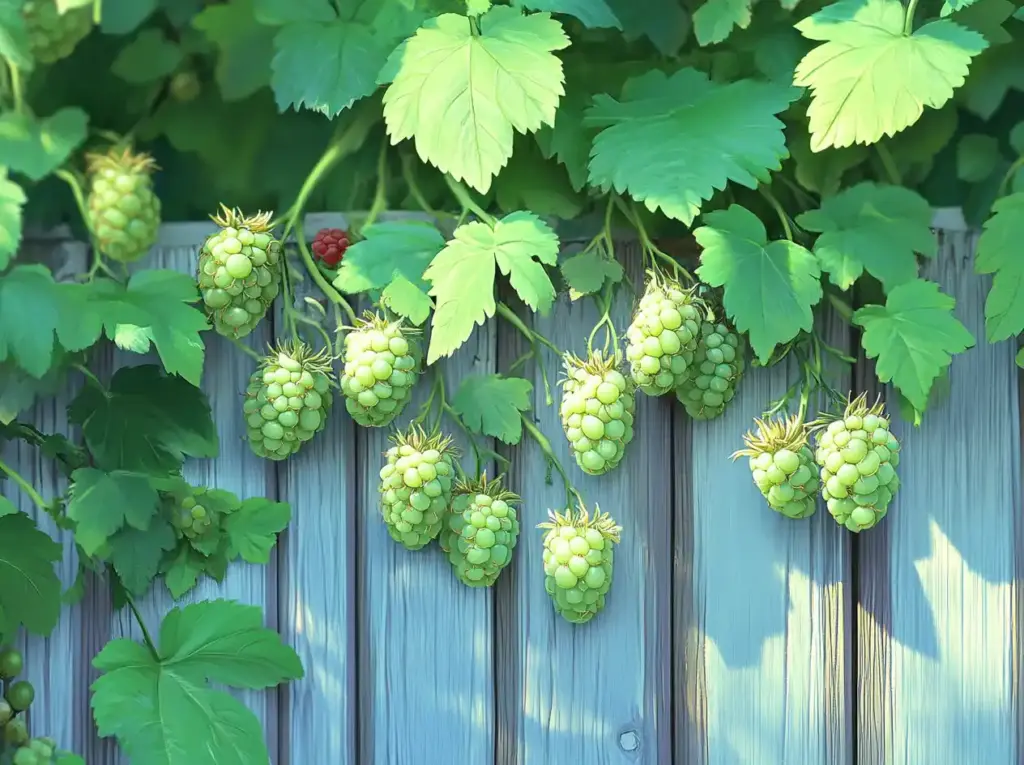
Don’t have a garden? No problem. You can still grow raspberries successfully in pots on a balcony, patio, or even a fire escape, provided you choose the right type and give them enough room to grow.
Can You Grow Raspberries in Pots?
Yes, but with a catch—standard raspberry canes tend to send out suckers and want to spread. In a container, their root systems are more restricted, which can reduce their vigor and yield over time.
To get the best results in containers:
- Use large pots at least 20 inches (50 cm) wide
- Ensure excellent drainage (add gravel or broken pottery to the bottom)
- Position them in partial sun, away from harsh wind
- Water and feed regularly, as pots dry out quickly
Dwarf Raspberry Bushes
For containers, dwarf raspberry varieties are the way to go. These compact plants grow only about 3 feet (90 cm) tall, yet produce impressively heavy crops.
Top dwarf raspberry varieties to try:
- Ruby Beauty – Compact and thornless, perfect for pots
- BonBon Berry Yummy – Decorative and productive
- LowBerry Baby Dwarf
- LowBerry Little Sweet Sister
- LowBerry Goodasgold
These small-space champions produce lots of side shoots, increasing your yield without needing much room.
🛠️ Container Tip: Use mulch (like straw or wood chips) on top of the soil to help retain moisture and protect shallow roots.
3. Raspberry Plant Care
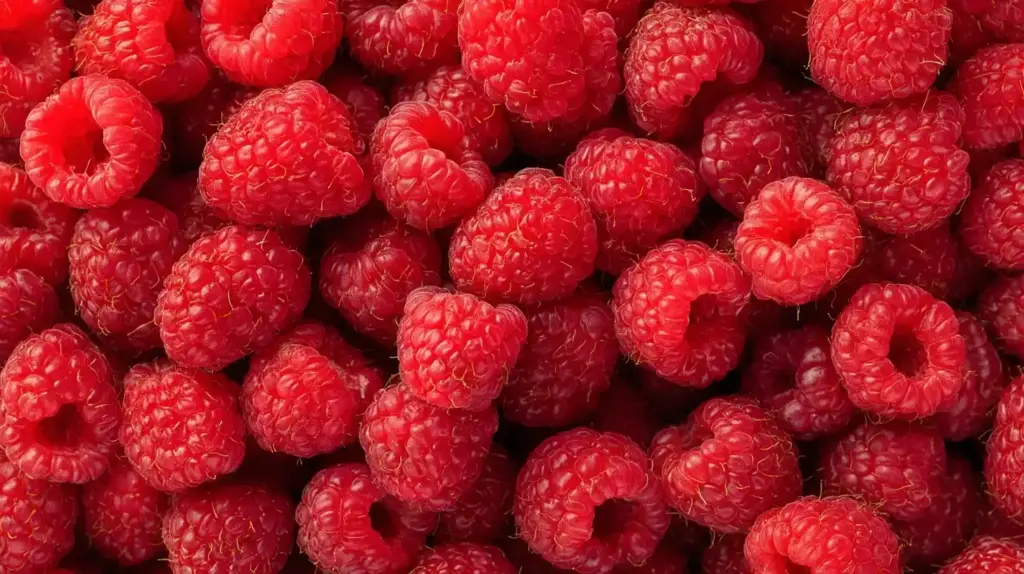
Once you’ve planted your raspberry canes, ongoing care is the key to a thriving harvest. The good news? Raspberries are relatively low-maintenance once established. Here’s everything you need to know to grow raspberries successfully year after year.
When to Plant Raspberries
Timing matters. The best time to plant raspberries is during their dormant season, which typically falls between late autumn and early spring.
Ideal planting window:
- November to March, preferably before Christmas if possible
- Avoid planting in frozen or waterlogged soil
- Aim for a dry, cool day to get them started on the right foot
Best Soil for Raspberries
Raspberries aren’t too fussy, but they do have a few preferences when it comes to soil:
- Well-draining soil is essential
- Avoid heavy clay or chalky soils if possible (though they can adapt)
- Enrich the planting area with compost or phosphorus-rich bone meal
- Maintain moisture with mulch, but don’t let the roots sit in soggy ground
If drainage is poor, consider growing in raised beds or containers.
How to Plant Raspberries
Follow these steps for healthy, productive plants:
- Clear the area of weeds and old roots
- Mix in compost or organic matter
- Dig a shallow hole about 2 inches deep
- Spread out the roots and firm the soil around them
- Water well after planting
- Cut back new canes to about 10 inches unless you’re planting pre-trained long summer canes
Spacing reminder: 12–18 inches between plants, and at least 3 feet between rows
How to Water Raspberries
Raspberry canes have shallow root systems, so consistent watering is crucial—especially in containers or during dry spells.
- Water lightly and often to keep roots moist
- Avoid overwatering—soggy soil leads to rot
- Morning watering helps prevent disease by allowing the soil to dry during the day
- Apply mulch like straw, leaves, or wood chips to reduce evaporation
Feeding Raspberry Plants
Raspberries benefit from a seasonal feeding routine to fuel growth and fruiting:
- In February or early spring, feed with a potassium-rich fertilizer (e.g., sulphate of potash or chicken manure pellets)
- Alternatively, apply a generous layer of well-rotted compost
- Avoid high-nitrogen fertilizers, which encourage leafy growth but reduce fruit yield and can contribute to diseases like spur blight
4. Growing Raspberries From Cuttings
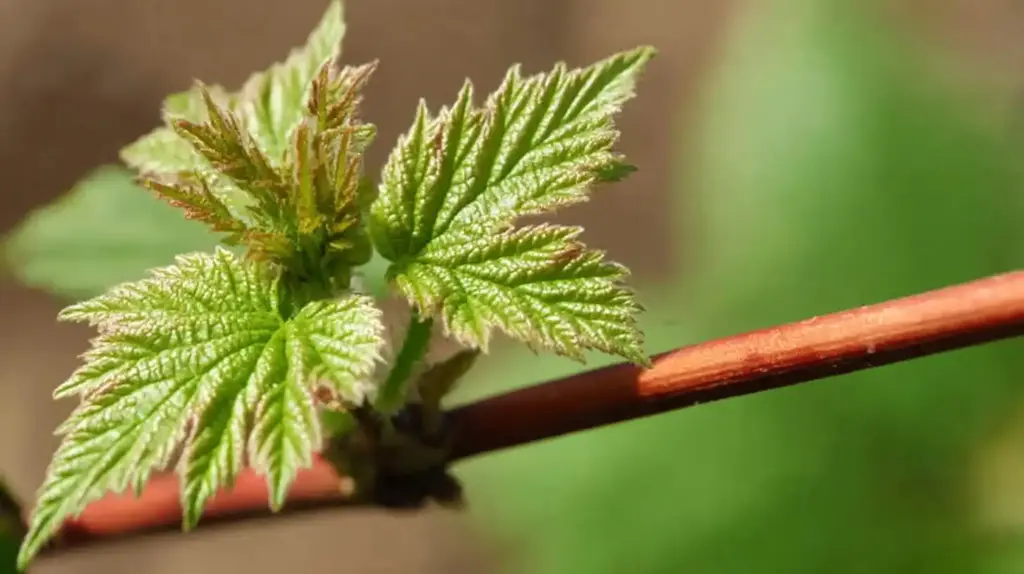
If you want to expand your raspberry patch or share plants with a friend, growing raspberries from cuttings is a budget-friendly and rewarding method. It’s also a fun project for gardeners of all ages, including kids learning about plant life cycles.
How to Grow Raspberries from Root Cuttings
Raspberries naturally produce suckers—young shoots that pop up around the parent plant. These suckers can be dug up and replanted to start new canes.
Follow these steps for success:
- Locate a healthy sucker with at least 6 inches of root attached
- Gently dig around the base and separate it from the main plant
- Replant immediately in your garden or container at the same depth as it was growing
- Water thoroughly and mulch the area to keep soil moist
These cuttings are best taken in late winter or early spring, when the plant is still dormant.
A Word on Disease Prevention
There is a small risk of transferring fungal diseases when propagating raspberries from existing plants. To minimize risk:
- Only take cuttings from healthy, high-yielding canes
- Avoid using suckers from plants showing signs of wilting, yellowing, or spots
- If in doubt, buy certified disease-free canes from a reputable nursery
With proper care, these cuttings will establish quickly and begin fruiting in their second year, just like nursery-grown canes.
5. Harvesting Raspberries

One of the best parts of growing raspberries is enjoying the fresh, juicy fruit straight from the cane. When you’re short on space, every berry counts, so it’s important to harvest at the right time and in the right way to maximize your yield.
When Are Raspberries Ready to Pick?
Raspberries ripen between June and August for summer varieties, and from late August into September for autumn-fruiting types. Here’s how to tell when they’re ready:
- The berries turn a deep red (or golden/yellow depending on variety)
- Ripe raspberries slide off the stem easily with a gentle tug
- Unripe berries are firm and won’t come off cleanly
Best Practices for Harvesting
- Pick early in the day when berries are firm and cool
- Avoid picking immediately after rain, as wet berries spoil faster
- Use shallow containers to avoid crushing delicate fruit
- Harvest every 1–2 days to stay ahead of birds and bugs
Tip: Remove overripe, moldy, or damaged fruit right away to prevent pests and disease.
How Long Do Raspberry Canes Produce?
A healthy raspberry cane typically fruits for 3–6 weeks each season. By mixing summer and autumn varieties in your garden, you can enjoy a longer harvest window—sometimes even from June through October with proper care and pruning.
6. How to Prune Raspberries

Pruning is essential for healthy canes and a strong harvest, especially when you grow raspberries in a small space. The trick is knowing which canes to keep and which to remove—this varies depending on whether you have summer or autumn-fruiting varieties.
Understanding Raspberry Cane Growth
Raspberry canes follow a two-year cycle:
- Year 1: New canes (called primocanes) grow but don’t fruit (unless it’s an autumn variety)
- Year 2: These same canes (now floricanes) bear fruit, then die back
So proper pruning is all about managing this rotation.
Pruning Summer Fruiting Raspberries
These fruit on second-year canes, so your goal is to clear out old canes and make space for the new ones.
- After fruiting (late summer or autumn), cut the brown, woody canes down to ground level
- Leave the green, flexible new canes—these will produce next year’s crop
- Tie new canes to supports to keep them upright and organized
Pruning Autumn Fruiting Raspberries
These fruit on first-year growth, which simplifies pruning.
- In late winter (February or early March), cut all canes to ground level
- New shoots will grow in spring and produce fruit later that same year
🔧 Beginner Tip: Always prune in dry weather to prevent fungal issues like cane blight. Use sharp, clean pruners for a smooth cut.
Pruning may seem intimidating at first, but once you understand your variety, it becomes a quick and satisfying seasonal task.
7. How to Store Raspberries
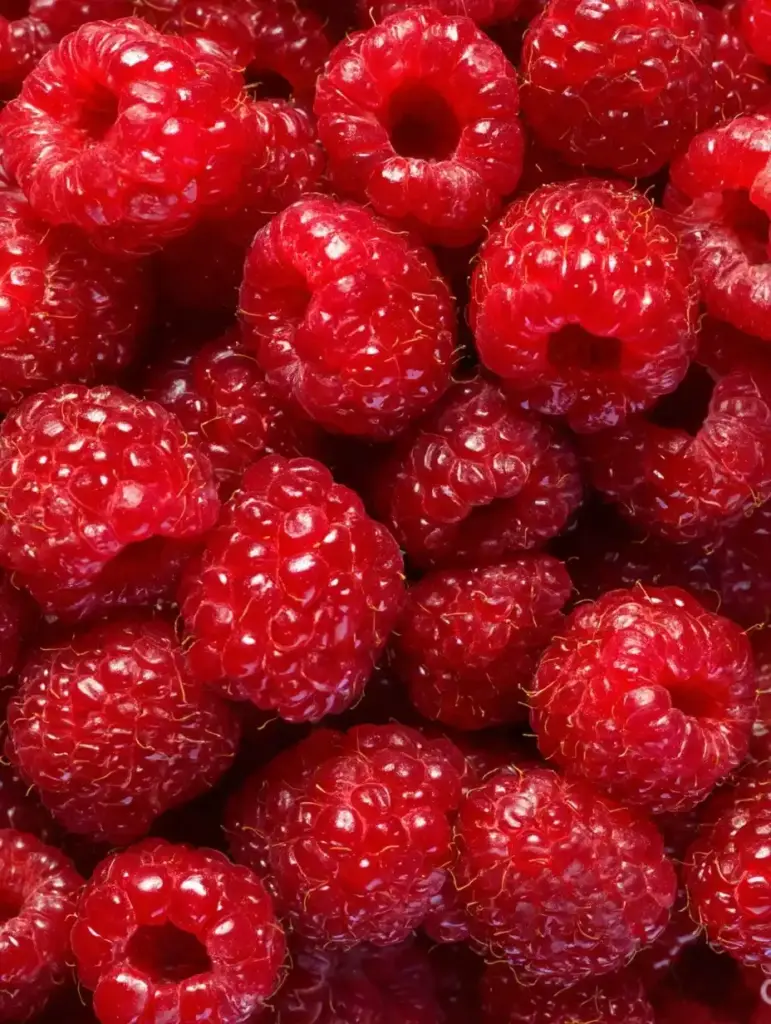
Fresh raspberries are incredibly delicate, which means proper storage is key if you want to enjoy your harvest for more than a day or two. Whether you’re picking a handful or a whole bowl, a few simple techniques will help you preserve both taste and texture.
Short-Term Storage: Refrigeration
For immediate use, store your raspberries in the fridge, but handle them with care:
- Don’t wash them until just before eating
- Place berries in a single layer on a paper towel-lined plate or shallow container
- Keep them in the coldest part of the fridge
- Eat within 1–2 days for best flavor and freshness
Long-Term Storage: Freezing Raspberries
If your plants are producing more than you can eat, freezing is the best way to keep your raspberries for months without losing their quality.
How to freeze raspberries:
- Gently wash and dry the berries
- Spread them in a single layer on a baking tray
- Freeze for at least 3 hours until solid
- Transfer to freezer-safe bags or glass jars, removing excess air
This method prevents the berries from clumping together and makes it easy to grab just what you need for smoothies, baking, or snacking.
🧊 Frozen raspberries will keep for up to 12 months and still taste fantastic in sauces, jams, or baked goods.
8. Common Raspberry Pests, Diseases & Problems
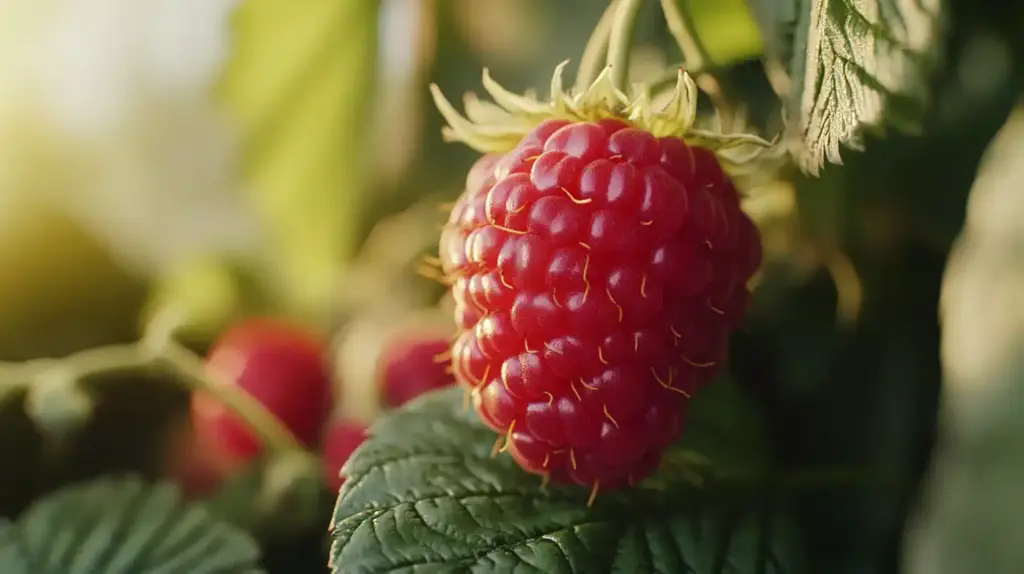
Even in small gardens or containers, raspberry plants can face a range of pests and fungal issues. The good news? Most are easy to prevent or treat with a little vigilance and good growing practices.
Simple Ways to Prevent Raspberry Pests & Diseases
Healthy plants are your best defense. Follow these tips:
- Space canes properly to promote airflow
- Stick to a single row layout in tight gardens
- Use raised beds or amend soil to improve drainage
- Water lightly in the morning—never at night
- Mulch to prevent soil splash and moisture loss
- Remove moldy or overripe fruit promptly
- Regularly inspect leaves and stems for early signs of trouble
Adding companion plants (more on that soon!) can also help repel unwanted bugs naturally.
Common Raspberry Pests
Here are the main culprits you might encounter:
🪲 Raspberry Beetle & Worm
- Small brown beetles lay eggs in developing fruit
- Worm-like larvae cause dry, grey patches
- Solution: Harvest early and rotate soil annually
🐛 Raspberry Sawfly
- Caterpillars eat entire leaves, leaving only veins
- Look for clusters and remove them by hand
- Dunk in soapy water to control
🐞 Raspberry Aphids
- Cause curled leaves and transmit viruses
- Control with soapy spray or attract predators like ladybirds
🐜 Cane Borers
- Beetles lay eggs inside stems, causing wilting tips
- Prune and discard affected canes immediately
🕷️ Leaf & Bud Mites
- Tiny sap-sucking mites that yellow leaves
- Generally not serious, but manage with improved airflow
🪰 Spotted Wing Drosophila
- Fruit flies that lay larvae inside berries
- Pick fruit as soon as ripe and use DIY traps
🐞 Picnic Beetles
- Attracted to overripe fruit left on canes
- Keep beds clean and harvest frequently
Raspberry Diseases
Diseases often strike in wet, crowded, or poorly drained conditions. Here are the most common ones to watch for:
🌱 Raspberry Root Rot
- Symptoms: Wilting, browning, root decay
- Prevention: Improve drainage, avoid overwatering
🍂 Raspberry Spur Blight
- Brown or black lesions on lower canes
- Thin out weak canes and prune in dry weather
🌾 Raspberry Cane Blight
- Cracked stems, small black spots (fungus)
- Remove and burn infected canes; improve circulation
🌿 Raspberry Rust
- Orange or yellow fungal spots on leaves
- Caused by poor air flow—prune and space canes properly
🛡️ Tip: Always sanitize tools between cuts when pruning diseased plants.
9. Best Companion Plants for Raspberries
When you grow raspberries in a small space, every inch of soil matters—so strategic companion planting becomes a powerful tool. Choosing the right plant neighbors can not only maximize your growing space, but also boost soil health, naturally repel common raspberry pests, and increase your overall yield. For example, pairing raspberries with onion or garlic can help deter insects, while low-growing crops like spinach or perennial herbs act as natural ground cover to suppress weeds. This layering technique is especially helpful in raised beds or containers, where vertical gardening and smart spacing allow you to grow raspberries more efficiently and protect your plants at the same time.
Benefits of Companion Planting
Strategically pairing plants can:
- Repel common pests (like aphids and beetles)
- Reduce disease by improving airflow and moisture control
- Enrich the soil with nutrients
- Create ground cover to suppress weeds
- Attract pollinators like bees and butterflies
Best Vegetables & Herbs to Grow with Raspberries
Here are space-efficient and beneficial companions:
🧄 Alliums (Garlic, Onions, Leeks, Chives)
- Natural fungicides and insect repellents
- Help control aphids, cane borers, and fungal infections
- Chives attract pollinators and deter pests
🥬 Turnips
- Grow well in partial shade
- Enrich soil and have antifungal properties
🌱 Peas
- Fix nitrogen in the soil, feeding raspberries
- Compact varieties won’t block air flow
🌼 Chamomile
- Antifungal and pollinator-friendly
- Also great for natural remedies!
🥗 Spinach
- Thrives in the shaded soil beneath canes
- Quick-growing and easy to harvest around raspberries
Other Good Companion Plants
Include flowers and herbs that double as ground cover and pest deterrents:
- Tansy – repels bugs and improves soil
- Yarrow – attracts beneficial insects
- Chervil – antifungal and great in shade
- Nasturtiums – trap aphids and add color
Plants to Avoid Near Raspberries
Some crops are incompatible with raspberries due to shared diseases like verticillium wilt.
🚫 Avoid planting near:
- Tomatoes
- Potatoes
- Peppers
- Aubergines (eggplant)
Also be cautious when planting blackberries or gooseberries nearby—they share many pests and diseases that can spread in tight quarters.
Frequently Asked Questions (FAQ)
Can I grow raspberries in containers?
Yes! You can grow raspberries in large containers (at least 20 inches wide) with good drainage. For best results, choose dwarf raspberry varieties like Ruby Beauty or LowBerry Baby Dwarf which are bred specifically for small spaces and pots.
How much sunlight do raspberries need?
Raspberries grow best in partial to full sun, ideally getting 4–6 hours of sunlight per day. They can tolerate light shade, especially in hot climates, but avoid planting them in deep shade.
How often should I water raspberry plants?
Raspberries need consistent moisture, especially during fruiting. Water them lightly and frequently—about 1–2 inches per week—making sure the soil stays moist but not soggy. Mulching helps retain soil moisture.
How long does it take for raspberry plants to bear fruit?
Raspberry canes planted in early spring typically fruit in their second year if they are summer varieties. Autumn-fruiting varieties can produce fruit in their first year if planted early enough and properly cared for.
What’s the best raspberry variety for small gardens?
Look for high-yielding and compact varieties. Top choices include:
- Ruby Beauty (dwarf, great for pots)
- Glen Ample (high-yield summer variety)
- Autumn Bliss or Polka (great autumn fruiters)
Do raspberries spread?
Yes, most raspberries spread via underground suckers, which can be invasive if not managed. In small gardens, grow raspberries in containers or raised beds to keep them contained.
When is the best time to plant raspberries?
The ideal time to grow raspberries is during their dormant season, from November to March. Avoid planting in frozen or overly wet soil, and aim for a cool, dry day for best results.
Do I need to prune raspberries every year?
Yes. Pruning is crucial to grow raspberries productively.
- Summer varieties: Cut out fruited canes after harvest
- Autumn varieties: Cut all canes down to the ground in late winter
How do I keep birds from eating my raspberries?
Use garden netting or bird-proof mesh during fruiting season. Also, consider placing a scarecrow or reflective items like CDs or foil near the patch to deter birds.
✅ Conclusion
You don’t need a sprawling backyard to grow raspberries successfully. With just a few smart techniques—like container gardening, vertical training, and thoughtful companion planting—you can enjoy lush raspberry harvests in the smallest of garden spaces. Whether you’re using DIY trellis ideas to support canes along a wall or growing berries in raised beds, it’s easier than you think to make the most of tight spaces. Raspberries are one of the most fulfilling crops to grow for both beginners and seasoned gardeners alike, especially when paired with other smart strategies like growing perennial vegetables or shade-tolerant herbs.
With a little creativity and consistent care, you’ll not only grow raspberries but also create a thriving, space-efficient garden bursting with flavor.

